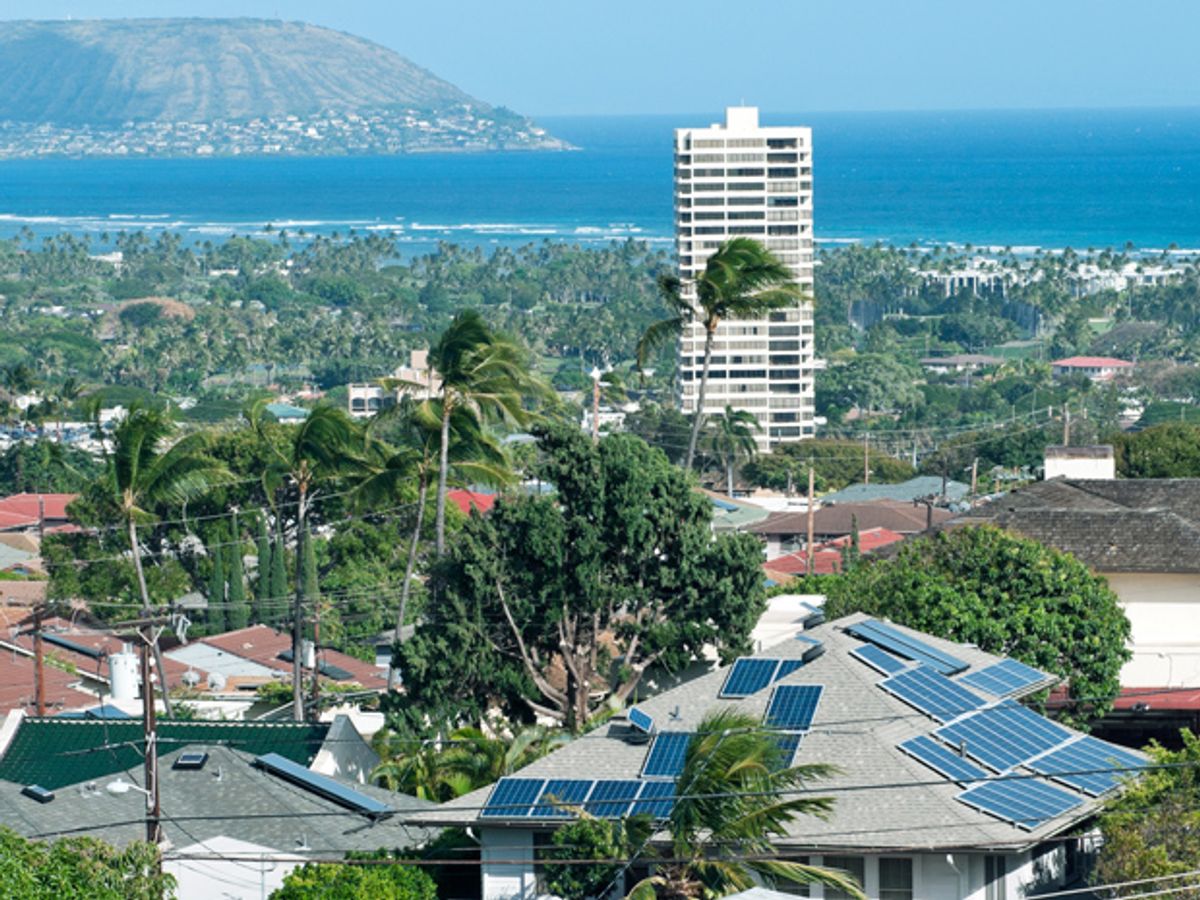Utilities are asking more of the rooftop solar systems that increasingly are popping up throughout their distribition grids. As we profile in this month’s Spectrum, leading utilities are deputizing solar system’s inverters to function as junior grid regulators to help stabilize the grid. Hawaiian Electric Company and inverter manufacturer Enphase Energy just showed how swiftly such upgrades can happen.
In a single day Enphase and HECO remotely reprogrammed some 800,000 microinverters attached to individual photovoltaic panels on Oahu, accounting for roughly 60 percent of the island’s distributed solar capacity according to Ameet Konkar, Enphase Energy’s senior director for strategic initiatives. Those systems deliver up to 140 megawatts, nearly as much power as the state’s largest conventional power plant, says Konkar.
Oahu needs higher-functioning solar systems because it leads the U.S. in per capita solar penetration, with 12 percent of residential customers operating rooftop systems. Island grids are more susceptible to even small perturbations, such as occurs when trees fall on wires and lightning strikes. The solar upgrade will help HECO’s grid ride through the resulting power glitches.
Whereas standards required solar systems to shut down at the first sign of substandard AC voltage and frequency, HECO and Enphase’s upgrade instructs the PV microinverters to ride through such irregularities. Like the momentum in a conventional power plant’s spinning turbines, the solar systems’ enduring power generation should help restabilize the grid’s AC signal.
What enabled Enphase and HECO to make the upgrade in a day? A built-in, proprietary two-way data-over-powerline link that Enphase uses to monitor every one of its microinverters. Konkar says Enphase’s cloud-based systems communicate with each of its panel-level devices every five minutes. Upgrading the software-defined electronics was just a matter of sending them new parameters.
California utilities, meanwhile, are still waiting for UL testing procedures to proceed with the more ambitious new smart inverter standards described in our print news piece. The standard, approved by the California Public Utilities Commission in December, empowers smart inverters to dynamically regulate voltage levels on distribution feeders. They can thus fix the voltage instability that limits how much solar generation that a given distribution feeder can accommodate.
Konkar says that Enphase’s existing microinverters do not generate the “reactive” power required to perform voltage regulation. However, he says this functionality will be built into Enphase’s next generation microinverters, due out later this year.
Peter Fairley has been tracking energy technologies and their environmental implications globally for over two decades, charting engineering and policy innovations that could slash dependence on fossil fuels and the political forces fighting them. He has been a Contributing Editor with IEEE Spectrum since 2003.



